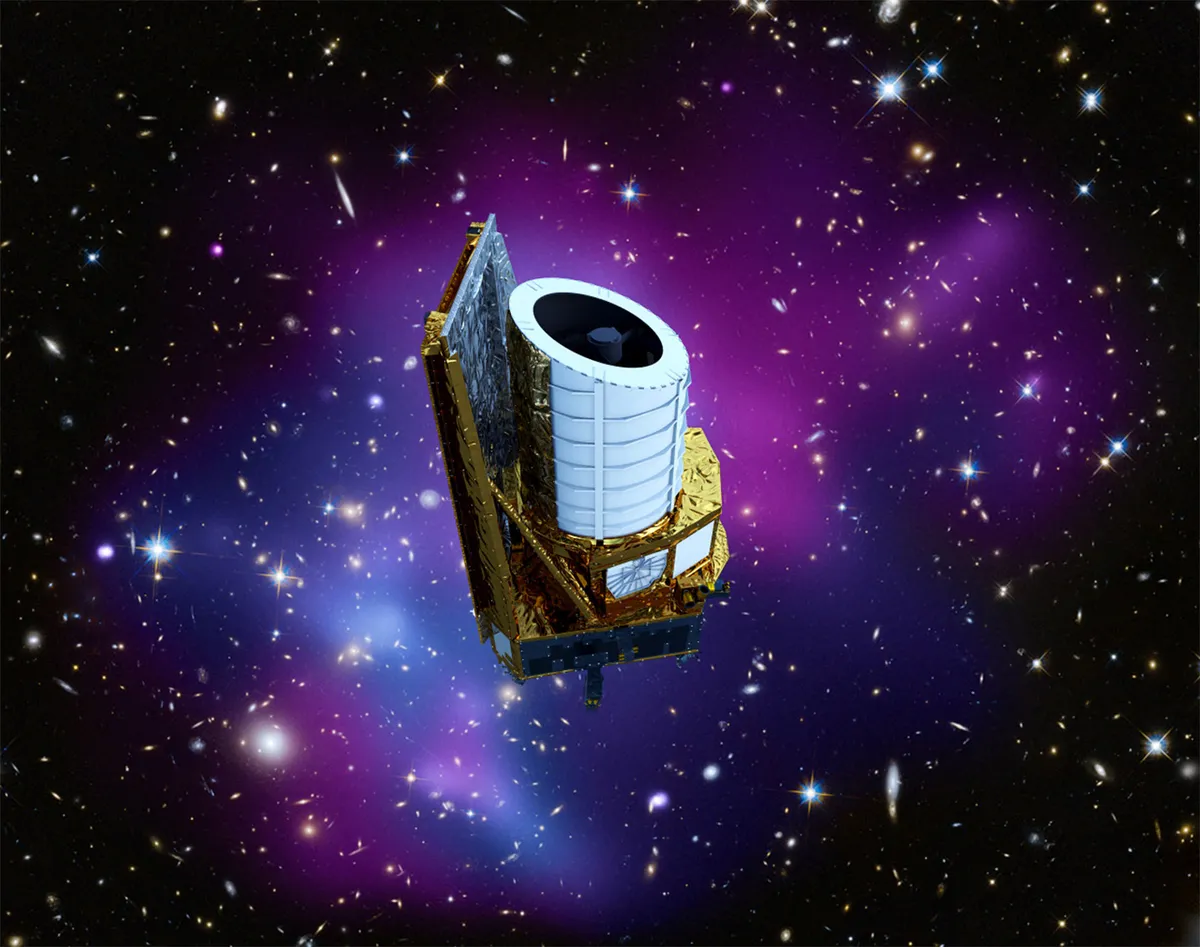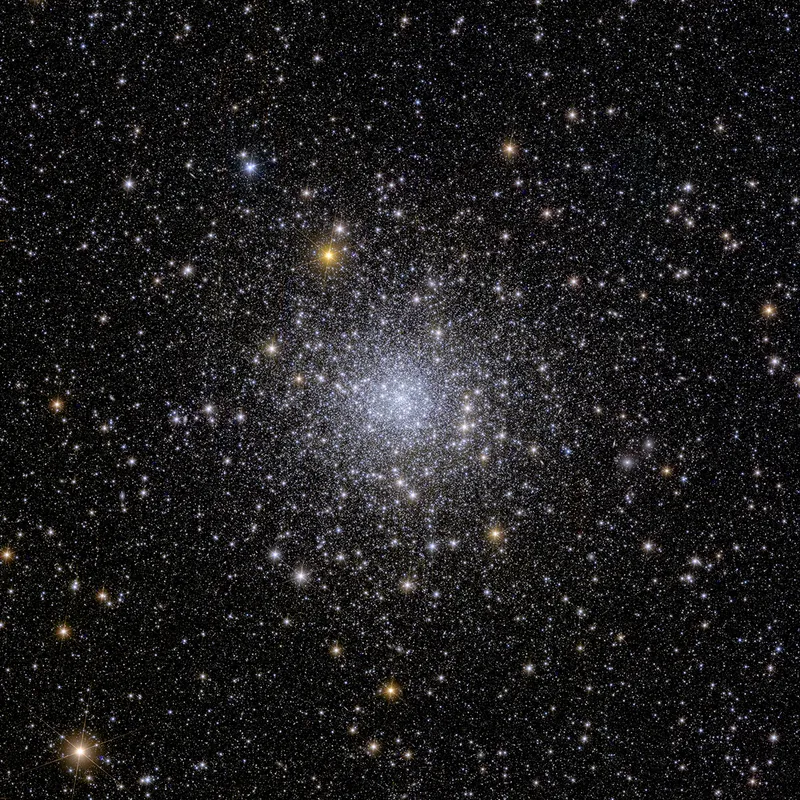The first images by the Euclid mission reveal stunning vistas of the Horsehead Nebula, the Perseus Galaxy Cluster and a trio of crystal-clear deep-sky targets.
The European Space Agency's Euclid mission launched on 1 July 2023, with the goal of discovering the nature of dark matter and dark energy.
Euclid is also helping track down rogue planets, wandering through space without a host star.
But before it begins its main science objectives, Euclid has captured 5 amazing images of the cosmos to test and demonstrate its instruments.

Euclid, dark matter and dark energy
95% of the Universe is made up of dark matter and dark energy.
That means all the visible matter we see with our eyes makes up just 5% of what's in the Universe.
Dark matter is a substance that can't be directly detected, while dark energy is the name given to the force accelerating the expansion of the Universe.
Euclid will attempt to solve the mysteries surrounding these two cosmological enigmas by studying 2 billion galaxies.
It will do this by creating the most extensive 3D map of the Universe ever created.

How Euclid captures images
Euclid is designed to produce a sharp visible and infrared image across a huge part of the sky in just one sitting.
These first images captured by Euclid are intended to showcase just what it can do.
They show how bright stars and faint galaxies can all be captured in clear detail by the spacecraft.
“We have never seen astronomical images like this before, containing so much detail," says René Laureijs, ESA’s Euclid Project Scientist.
"They are even more beautiful and sharp than we could have hoped for, showing us many previously unseen features in well-known areas of the nearby Universe. Now we are ready to observe billions of galaxies and study their evolution over cosmic time."
Let's take a look at Euclid's first images.
Euclid's first images
The Perseus Cluster of galaxies

The Perseus Cluster of galaxies is one of the most massive structures in the Universe that we know of.
It's located 240 million lightyears away, and this Euclid image reveals the cluster like never before.
The Euclid image reveals 1,000 galaxies that are part of the Perseus Cluster, plus over 100,000 extra background galaxies.
Many of these background galaxies are so distant and faint, they have never been seen before by human eyes.
The galaxies are 10 billion lightyears away, meaning their light has been travelling since not long after the birth of the Universe before reaching Euclid's camera sensors.
Astronomers say galaxy clusters like the Perseus Cluster can only exist if dark matter is present in the Universe.
Euclid is tasked with observing a wealth of such clusters, to better understand the dark matter that holds them together.
Horsehead Nebula

The Horsehead Nebula is one of the most famous astronomical objects and a favourite target of astrophotographers.
It's so-called because of the shape of the prominent dark nebula that resemble's a horse's head.
The Horsehead Nebula is in the constellation of Orion, and is a place where stars are born known as a stellar nursery.
This Euclid image of the nebula is a detailed panoramic that shows the surrounding area in great detail.
Mission scientists hope Euclid's observations of the Horsehead could reveal young Jupiter-mass exoplanets within, as well as baby brown dwarfs and stars.
Spiral galaxy IC 342

This is a wonderfully subtle yet beautiful image of spiral galaxy IC 342, also known as the 'Hidden Galaxy'.
It's destined to become one of the best-loved Euclid images, because of how clearly it shows the galaxy's intricate structure.
Many of the most famous galaxies are face-on spirals like this, fortunately positioned so we can admire their beauty through telescopes.
Euclid will image billions of galaxies, enabling astronomers to study how they're influenced by dark matter and dark energy.
According to the Euclid science team, the spacecraft's infrared vision has already revealed important information about stars within IC 342.
Irregular galaxy NGC 6822

Not all galaxies are beautiful face-on spirals! Some appear to us as edge-on galaxies (we can't see their spiral structure from Earth), while others are irregular galaxies.
This is irregular galaxy NGC 6822, which is located 1.6 million lightyears away: a stone's throw in celestial terms.
To create its 3D map of the Universe, Euclid will observe light from galaxies out to 10 billion lightyears.
In doing so, it will effectively be able to look back in time to the early Universe.
Back then, most galaxies in the early Universe don’t look like neat spirals, but are instead irregular and small.
These early galaxies are the building blocks for bigger spiral galaxies like our Milky Way, yet we do find irregular galaxies relatively close by.
Globular cluster NGC 6397

Globular clusters are some of the oldest objects in the Universe, and often look like cosmic snowglobes!
They are densely-packed clusters of hundreds of thousands of stars, all bound together by gravity.
The last of the Euclid images to be released, globular cluster NGC 6397 is the second-closest globular cluster to Earth, just 7,800 lightyears away.
The Euclid team say no other telescope can observe a whole globular cluster in a single observation while also distinguishing so many stars.
These faint stars reveal the history of the Milky Way and where dark matter is located.
What next for Euclid?

Now that we've seen the first Euclid images, what next?
Since its launch, scientists and engineers have been testing and calibrating Euclid’s scientific instruments.
Euclid's science observations are due to begin early 2024, marking the beginning of a 6-year project to survey one third of the sky.
Euclid mission data will be released once per year, and will be made available to scientists around the world.
It seems the next 6 years could see some major breakthroughs in astronomers' understanding of dark matter and dark energy.
"Dark matter pulls galaxies together and causes them to spin more rapidly than visible matter alone can account for; dark energy is driving the accelerated expansion of the Universe. Euclid will for the first-time allow cosmologists to study these competing dark mysteries together," says ESA Director of Science, Professor Carole Mundell.
"Euclid will make a leap in our understanding of the cosmos as a whole, and these exquisite Euclid images show that the mission is ready to help answer one of the greatest mysteries of modern physics."

